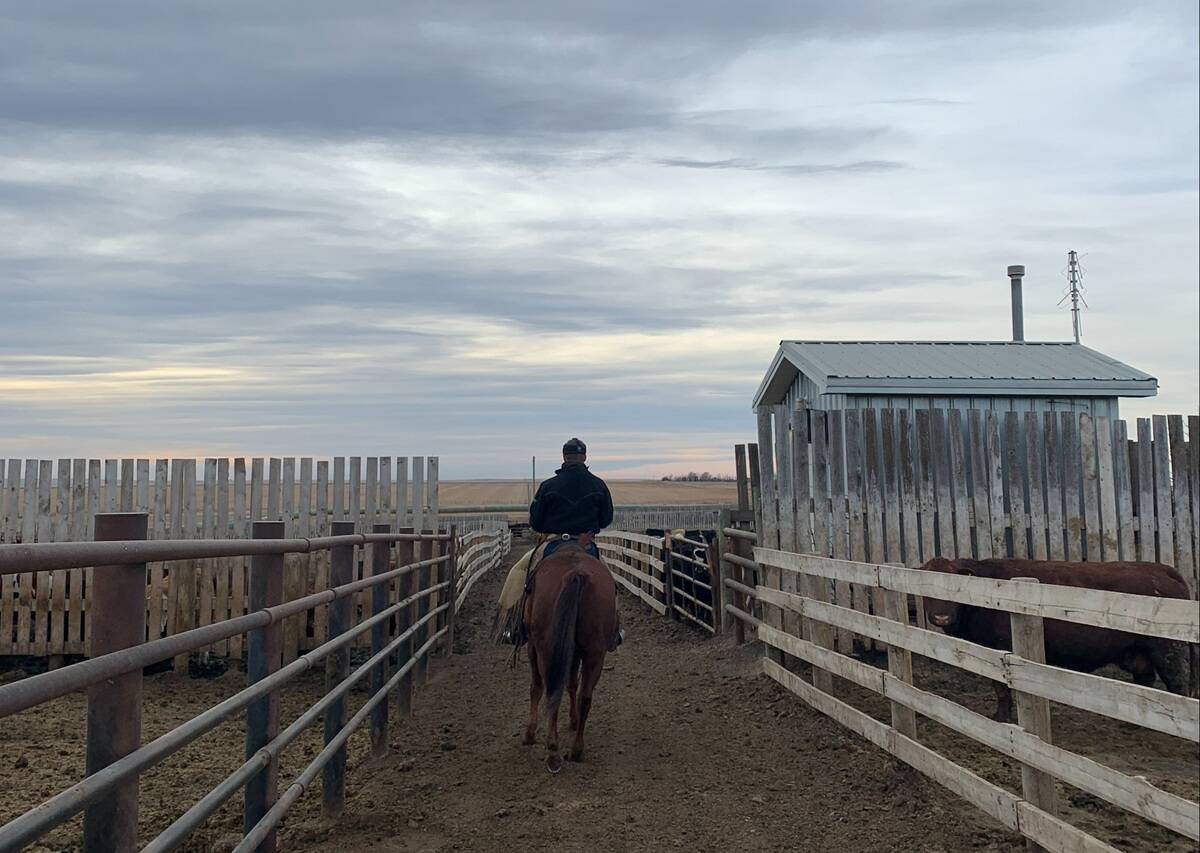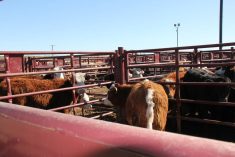[UPDATED: May 2, 2024] The drive to protect native grasslands on the Canadian Prairies is gaining momentum.
The Canadian Cattle Association (CCA), in partnership with Ducks Unlimited Canada and the Nature Conservancy of Canada, is working to create the Grasslands Conservation Initiative.
Canadian Cattle Association president Nathan Phinney says they have seen too much native grasslands converted for other uses.
Read Also

Pen riders still better than tech at detecting respiratory disease in feedlot cattle, says researcher
Recent research found that pen riders are better than tech at flagging signs of BRD in feedlot cattle
“It was a producer-led initiative which evolved into a deeper discussion, and then it made its way through the CCA channels. And then we started to push for it,” Phinney says.
The goal is to create a unified front on the loss of grasslands and to reward producers for stewardship. The plan is for the initiative to offer three types of easements to producers — short-term, medium-term and long-term.
“Basically, you’re getting paid per acre for the good work that you’re doing. Promising no break, no drain on grasslands and wetlands,” Phinney says.
He says short-term easements aren’t something they’ve thoroughly explored yet, but it is something producers have expressed interest in. He thinks short-term easements could be beneficial because they allow producers to make maintaining the native grassland a continuous discussion, and not a one-and-done scenario.
“That way, you’re not locking in for a long period of time,” Phinney says. “Test the waters, continue to have discussions on ways to improve. I mean honestly, the native prairie grasslands are the most sensitive ecosystem right now as far as extension, which nobody really talks about. That’s why we targeted that area first.”
Jeremy Hogan is the director of prairie grassland conservation at the Nature Conservancy of Canada. He says this is an important initiative because of the role native grasslands play in the environment.
“It’s a well-founded understanding that cattle production on native grasslands can be mutually beneficial,” Hogan says. “And there’s been lots of good stewardship work done by ranchers and other producers in the grasslands for generations. And there should be ways to recognize that and to help make it easier.”
The Nature Conservancy of Canada offers permanent easements for native grasslands, meaning they don’t have an expiration date. Many cattle producers shy away from this type of easement because it doesn’t offer room for flexibility and commits the next generation on the land to this easement.
Hogan says because of this, they committed to supporting the CCA in offering other options for producers.
“Understanding that not all landowners are in a position to commit to something like the standard conservation agreement that NCC works under… we started looking for tools that would support the members of the CCA to participate in conservation and ways that they would choose to participate with,” Hogan says.
He says it’s important to create initiatives like this because grasslands are one of the most threatened ecosystems on the planet.
“They’re incredibly biodiverse places,” he says. “And they’re places that provide a lot of value for humans in terms of food production, and water filtration, soil sequestration, so many other services. And there needs to be action on the ground.”
The Grasslands Conservation Initiative was announced in the fall of 2023. Since then, Phinney says they submitted a pre-budget to the federal government, which the government was optimistic about. He also says they had a good discussion about this initiative at the CCA’s annual general meeting, which took place at the end of March.
“We’re open to all discussions with all different parts of the cattle sector, whether it be stock growers, or cow-calf or feeder backgrounding operations, and really get a sense of their concerns, and hopefully working on that.”
*Update: clarification was provided regarding the receipt of funding.

















